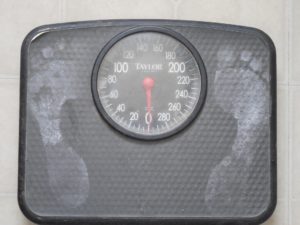- Calls to this hotline are currently being directed to Within Health or Eating Disorder Solutions
- Representatives are standing by 24/7 to help answer your questions
- All calls are confidential and HIPAA compliant
- There is no obligation or cost to call
- Eating Disorder Hope does not receive any commissions or fees dependent upon which provider you select
- Additional treatment providers are located on our directory or samhsa.gov
4 Changes You Can Make in Your Home to Support Eating Disorder Recovery

Contributor: Kate Clemmer, LCSW-C, Community Outreach Coordinator for The Center for Eating Disorders at Sheppard Pratt
It’s safe to say no one who has been through recovery from an eating disorder would downplay the difficulty or complexity of it. And while recovery is never simple or easy, there are some simple and straightforward changes you can make to reinforce recovery efforts and help prevent relapse.
These specific modifications are not changes in thinking (cognition) or even changes in behavior but rather, changes to your physical living space – your home environment.
How do environmental changes help with recovery?
Reinforcing environmental changes to promote and support behavioral change is a longstanding strategy applied in cognitive behavioral therapy (CBT). In fact, traditional learning theory says that behavior change is a direct product of your environment and that we learn to do things in new ways (change!) because our environment reinforces a particular behavior (Skinner, 1938, 1976).
The following ideas are just four relatively quick in-home changes you can try if you’re looking for new ways to initiate, sustain or strengthen your recovery.
1. Get rid of your scale.
Many people will need to have their weight monitored by a treatment professional during the recovery process. In the CBT for Eating Disorders protocol (Fairburn, 2008) the recommendation is to be weighed once a week by a therapist and to eliminate all at-home weighing. Given that a major characteristic of many eating disorders is a preoccupation with weight, the goal in recovery becomes decreasing weight-related thoughts. This isn’t likely to happen if you’re physically confronted with a scale every time you enter your bathroom. This would be like trying not to think about teddy bears and then placing a giant teddy bear in the middle of the room.

If you really want to strengthen your recovery or simply want to make recovery a little bit easier on yourself, don’t think too hard or long about it. Just grab your scale and donate it, trash it or give it to a treatment provider at your next appointment. You can also text a supportive family member to ask them to dispose of the scale while you’re out of the house. It can be tempting to just stash the scale in a closet or move it out of plain sight but it’s really best to get rid of it entirely. Your future self will thank you.
2. Ditch the diet food.
Go into the kitchen and take a few minutes to go through your refrigerator, freezer and pantry and dispose of any diet products. This includes any non-fat, low-calorie, “light”, or diet-branded meals and beverages. Why? Because diet foods interfere with recovery in a number of different ways.
First, they are designed to elicit moral judgments about food and eating. For example, a snack wrapper that says “guilt-free!” automatically implies you should feel guilty for eating other foods. Feeling ashamed about eating perpetuates eating disorder thoughts so you probably don’t want to be met with that message every time you open the cabinet.
Second, diet foods hinder your ability to adequately meet nutritional needs as they are often prepared to be smaller portions, less nutrient dense and, in many cases, just aren’t as flavorful (enjoyable). This can also lead to overeating or increased hunger later. Lastly, some diets foods are designed to cause a false sense of feeling full resulting in incomplete meals or decreased appetite. Eating disorder recovery is a time for repairing your natural hunger and fullness cues and the presence of diet foods will interfere with that.
In general, you want the food you have available in your home environment to support your recovery goals. After you finish disposing of diet foods, make a plan with your dietitian to re-stock your necessities and post a copy of your recovery meal plan prominently in your kitchen.
3. Create a positive setting for mealtimes.
Mealtimes can be quite stressful during recovery from an eating disorder. There is going to be anxiety and frustration along the way but some changes to the dining environment can help minimize the challenges. The goal is to create a space for meals that is welcoming, calming and consistent. If you don’t have a designated table space for meals, see what you can do to create one. (You may have to get creative in small spaces.)
If you have a table but it’s covered in mail or boxes or anything else, spend a bit of time clearing it off and replacing the clutter with elements that are calming and positive. You might want to add a table cloth and a candle or create a centerpiece that brings you joy in some way. Some people find it helpful to set up a speaker nearby to play music during meals or even post recovery mantras and inspirational quotes where they can be viewed from the table. Once you have established a positive and designated meal space, make an effort to eat meals here when you’re home as opposed to sitting on the couch or in the bedroom.
4. Take a walk around your home and note other items or settings that can be problematic for you.

Do you have fashion, beauty or fitness magazines lying around? The research is pretty clear on the impact of flipping through such magazines; even just three minutes can cause readers to feel worse about themselves and their bodies. Throw the physical magazines in the recycling bin and take an extra moment to cancel subscriptions.
Do you struggle with excessive exercise as a symptom of your eating disorder? If so, it won’t help to have exercise equipment constantly accessible in your home. This one may require some recruiting of friends, but it can make a difference to donate, sell or securely pack away equipment that is currently associated with the eating disorder for you. The goal is to create roadblocks between you and your symptoms.
When is it a good time to make environmental changes?
If you’re already working with an outpatient therapist but continue to struggle with specific behavioral goals, sometimes a shift in your environment can help you get unstuck. Or, if you’ve completed a treatment program at a higher level of care but you’re finding it difficult to maintain behavioral changes you made in the hospital setting, environmental modifications might benefit you.
Just think, if you were trying really hard to quit smoking you would never leave loose cigarettes, tobacco advertisements or even empty cigarette cartons all over your home. Similarly, as you work to heal from an eating disorder it doesn’t make sense to keep items around your house that make it even harder to choose recovery each day.
There’s always something you can do to create positive environmental change. If you live with other people – family, friends or roommates – sharing the recommendations above can help them assist you and understand your need for a recovery-focused home environment.
About the author:

Kate Clemmer is a licensed clinical social worker and has served in the role of Community Outreach Coordinator at The Center for Eating Disorders at Sheppard Pratt since 2008. In addition to coordinating The Center’s many community and professional education events, Kate provides body image and media literacy workshops in schools and facilitates The Center’s free weekly support group. Kate is currently involved in the implementation of a research project designed to support patients in making recovery-focused environmental modifications and developing relapse prevention plans.
References:
- Skinner, B. F. (1938). The behavior of organisms: An experimental analysis. Oxford, England: Appleton-Century.
- Skinner, B. F. (1976). About behaviorism. Oxford, England: Alfred A. Knopf.
The opinions and views of our guest contributors are shared to provide a broad perspective of eating disorders. These are not necessarily the views of Eating Disorder Hope, but an effort to offer discussion of various issues by different concerned individuals.
We at Eating Disorder Hope understand that eating disorders result from a combination of environmental and genetic factors. If you or a loved one are suffering from an eating disorder, please know that there is hope for you, and seek immediate professional help.
Reviewed By: Jacquelyn Ekern, MS, LPC on February 8, 2017
Published on EatingDisorderHope.com
